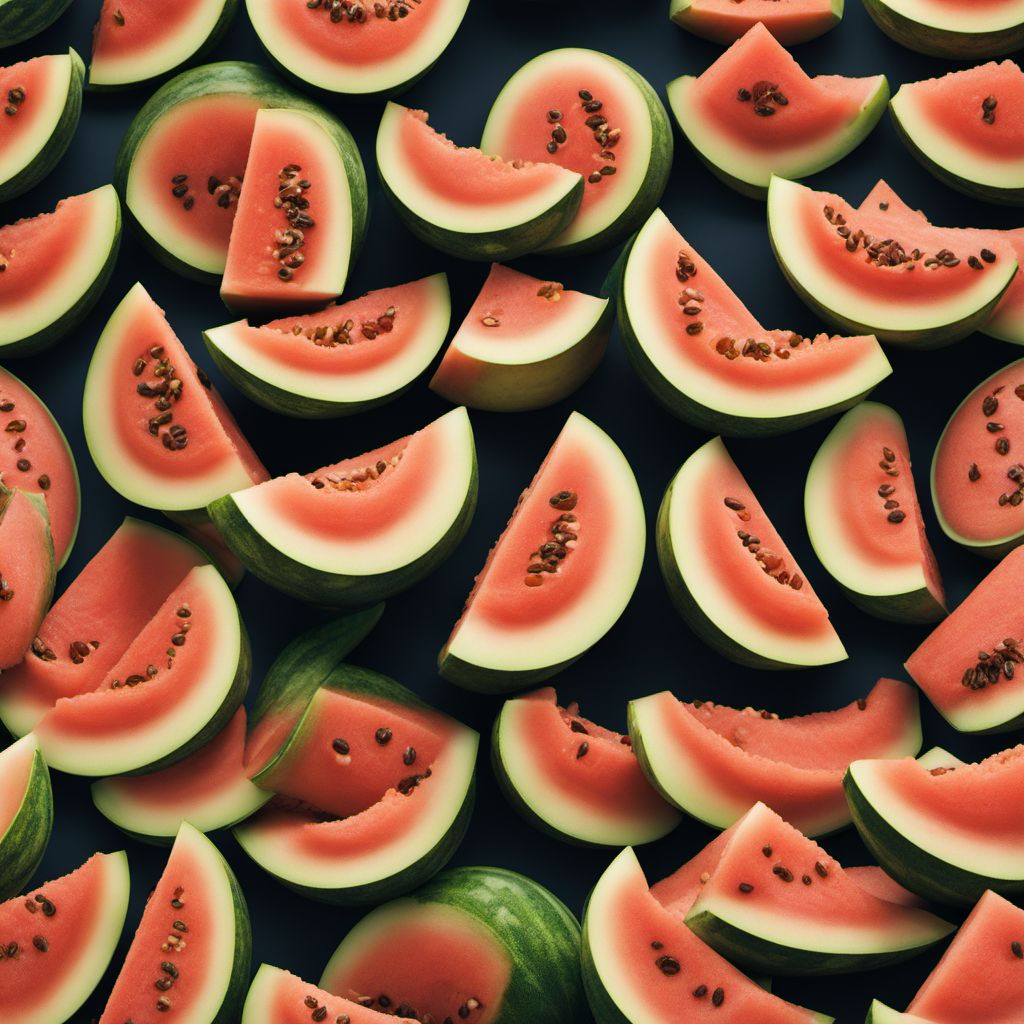
Ingredient
Melons and similar-
The Luscious World of Melons
Melons and similar fruits are known for their juicy flesh, vibrant colors, and refreshing taste. They come in various varieties, each with its unique flavor profile, ranging from sweet and floral to tangy and tropical. With their high water content and natural sweetness, melons are perfect for hydrating summer salads, refreshing beverages, and delightful desserts.
Origins and history
Melons have been cultivated for thousands of years, with origins traced back to ancient Persia and Egypt. They have since spread across the globe, becoming a staple in many cuisines. In addition to their culinary significance, melons hold cultural importance in various regions, symbolizing abundance, fertility, and good luck.
Nutritional information
Melons are low in calories and fat, making them a guilt-free treat. They are also a good source of vitamins A and C, as well as potassium and dietary fiber.
Allergens
Melons may cause allergic reactions in individuals with a sensitivity to fruits or pollen. It is advisable to consume melons in moderation if you have known allergies.
How to select
When selecting melons, look for ones that feel heavy for their size and have a slightly yielding skin. The skin should be free from bruises, blemishes, or soft spots. A sweet aroma near the stem end is a good indicator of ripeness. For watermelons, a yellow or cream-colored spot on the underside indicates ripeness.
Storage recommendations
To maintain the freshness of melons, store them at room temperature until ripe, then transfer to the refrigerator. Whole melons can be stored for up to a week, while cut melons should be consumed within a few days. Keep them away from strong-smelling foods as they can absorb odors easily.
How to produce
Melons can be grown in home gardens or containers, provided they have sufficient sunlight, well-drained soil, and regular watering. They thrive in warm climates and require a longer growing season to reach maturity.
Preparation tips
Melons can be enjoyed in a variety of ways. Slice them and enjoy them as a refreshing snack, blend them into smoothies, or use them in fruit salads, sorbets, and popsicles. They also pair well with savory ingredients like prosciutto or feta cheese in salads.
Substitutions
Cantaloupe can be substituted with honeydew melon or other similar fruits with a similar texture and sweetness. Watermelon can be substituted with other juicy fruits like strawberries or peaches.
Culinary uses
Melons are widely used in both sweet and savory dishes. They are commonly used in fruit salads, smoothies, sorbets, and desserts like melon balls or granitas. In savory dishes, melons are often paired with cured meats, cheese, or herbs to create refreshing salads or appetizers.
Availability
Melons are commonly available in regions with warm climates, such as the Mediterranean, Southeast Asia, and parts of the Americas. Specific varieties may have more limited availability depending on the local growing conditions.
